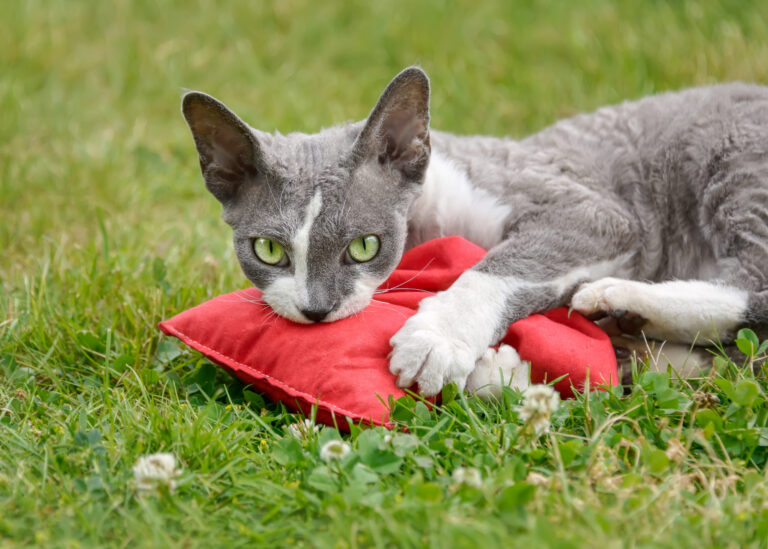Many cats become rather inebriated by the smell of valerian.
Did you know? Valerian and its effect
Six facts about valerian
- All types of valerian contain essential oils, which have a strong smell when dried.
- Common valerian root from common valerian (Valeriana officinalis) is used in cat toys.
- Many people find the smell of these dried plants unpleasant – it reminds them of old socks or indeed, stinky feet.
- Valerian tea has a calming, sleep-inducing effect on people.
- Some cats love valerian, whilst others aren’t interested in this herb.
Why cats love valerian
Valerian has a calming effect on many people – with cats, it often has the opposite effect. As soon as four-legged valerian lovers have sniffed out this herb, there’s no stopping them! They roll around in it, start salivating or purr at the object of their desire. Some then tear around your home or garden as if they’d been bitten by a tarantula. Others act as if the scent had befuddled their senses – like being inebriated.
The fragrant components of the valerian root are the reason for this behaviour. They remind cats of certain hormones emitted by females during the mating season.
Why do some cats love the smell whilst others are left cold?
Experts don’t yet have an explanation for everything to do with cats and valerian. For instance, it’s unclear why castrated males and females react to the smell. Cats that show no interest at all are usually very young or old.
Versatile: Valerian fun for cats
There are several toys for cats filled with valerian. A small disadvantage compared to catnip is that valerian smells far more unpleasant for humans. But if you choose a fragrant feline present, you’ll make four-legged valerian fans really happy.
The choice is huge: There are Valerian cushions in many colours and sizes as well as different valerian toys. Some cats even like a spray that encourages them to play.
However, never leave your cat unsupervised during play, otherwise there’s the risk of it swallowing large quantities of valerian or filler material.
Tips on valerian for cats
After around ten minutes of fun, put the toy out of reach again in order to maintain the appeal. If you leave valerian cushions and the like lying around your home, your cat will soon lose interest. You’re best off keeping cuddly cushions and the like with valerian in an airtight tin. After play, leave them to dry out well if your cat has slobbered on them.
It’s a rare occurrence, but if your cat reacts aggressively to valerian, don’t give it any toys or cushions with this dried herb. As it has a stimulating effect on most cats, it isn’t suitable for planned relaxation before trips or other exciting events.
Is your cat not interested in valerian or catnip? Try out Japanese catnip, also known as silver vine or matatabi.
Is valerian toxic for cats?
Some cats try dried valerian when it ends up in their paws. Although valerian isn’t toxic for cats, they shouldn’t consume large quantities of it. This could lead to stomach upset and vomiting. A lot of valerian can damage a cat’s liver. Furthermore, the dose makes the poison. If your cat has only eaten a small bit of valerian in a frenzy, you don’t need to worry about its health. However, swallowed toy filling can also pose a danger, so stay close by when you give your cat a valerian toy. This way, you can intervene if your cat destroys the stitching. Indeed, although valerian is known as a cat drug, it doesn’t cause addiction.
